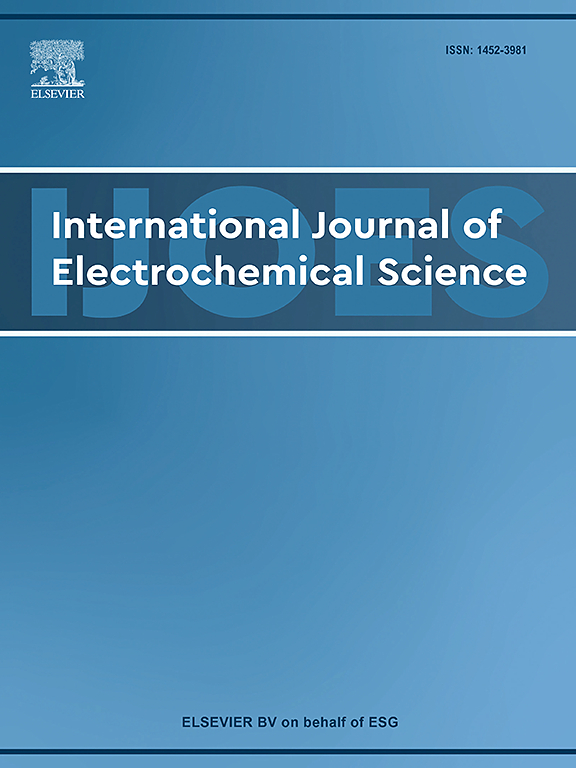Evaluation of Vitis vinifera seed oil as a green corrosion inhibitor for high-carbon steel and ferrovanadium alloys in sulfuric acid
IF 1.3
4区 化学
Q4 ELECTROCHEMISTRY
International Journal of Electrochemical Science
Pub Date : 2025-01-11
DOI:10.1016/j.ijoes.2025.100936
引用次数: 0
Abstract
The corrosion inhibition performance of Vitis vinifera seed oil (VVSO) was investigated on high-carbon steel (HCS) and ferrovanadium (FV) alloy in 0.25 M H₂SO₄ solution using gravimetric, potentiodynamic polarization, open circuit potential (OCP) measurements and optical microscopy. Gravimetric studies revealed superior inhibition efficiency on HCS, where corrosion rates decreased progressively with increasing VVSO concentration, reaching 95 % efficiency at 0.5 % VVSO after 360 h of exposure. In comparison, FV alloys exhibited moderate inhibition, peaking at 73.95 % at 2 % VVSO. Potentiodynamic polarization results confirmed mixed-type inhibition behavior, with significant reductions in corrosion current density for HCS, correlating with efficiencies exceeding 70 %. Conversely, for FV alloys, the highest inhibition efficiency of 72.95 % was recorded at 2 % VVSO, suggesting adsorption saturation at higher concentrations. Open circuit potential studies highlighted shifts to less negative potentials, indicative of enhanced corrosion resistance. For HCS, stabilization occurred around −0.490 V at 0.5 % VVSO, forming a protective layer, while for FV, the potential stabilized at −0.495 V at 3 % VVSO, demonstrating uniform inhibitor adsorption and reduced anodic dissolution. Overall, VVSO demonstrated concentration-dependent inhibition, exhibiting superior protection on HCS and moderate efficacy on FV as evident in the difference between the optical images of the inhibited and non-inhibited alloy surfaces. The findings underscore the potential of VVSO as an eco-friendly and effective corrosion inhibitor, with optimal performance influenced by substrate material and inhibitor concentration.
求助全文
约1分钟内获得全文
求助全文
来源期刊
CiteScore
3.00
自引率
20.00%
发文量
714
审稿时长
2.6 months
期刊介绍:
International Journal of Electrochemical Science is a peer-reviewed, open access journal that publishes original research articles, short communications as well as review articles in all areas of electrochemistry: Scope - Theoretical and Computational Electrochemistry - Processes on Electrodes - Electroanalytical Chemistry and Sensor Science - Corrosion - Electrochemical Energy Conversion and Storage - Electrochemical Engineering - Coatings - Electrochemical Synthesis - Bioelectrochemistry - Molecular Electrochemistry

 求助内容:
求助内容: 应助结果提醒方式:
应助结果提醒方式:


